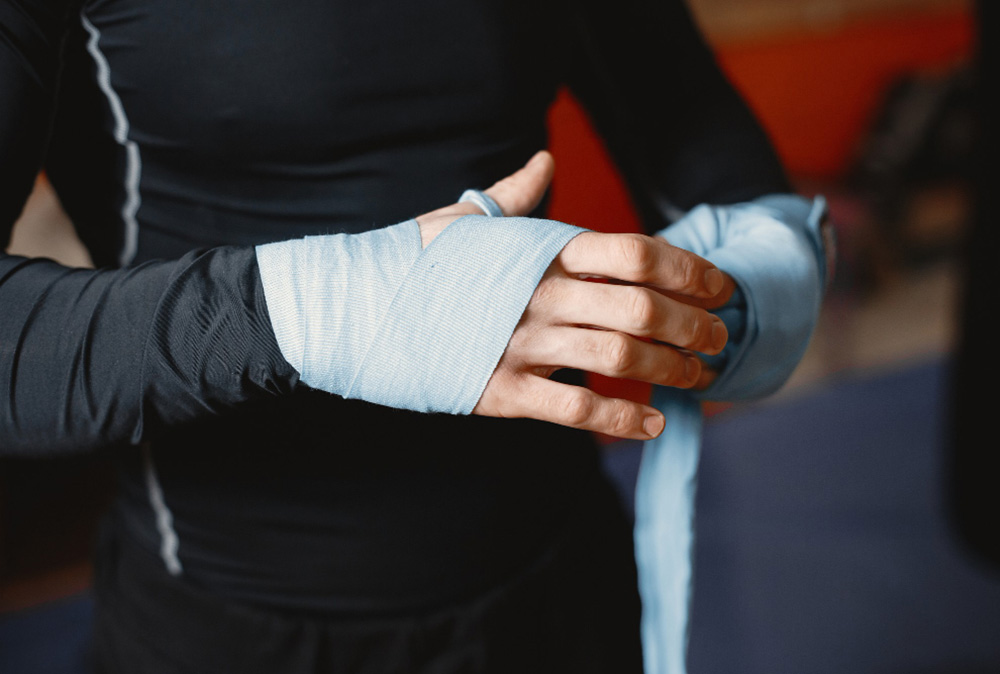In kickboxing, protecting your hands is paramount. Whether you’re training intensely on the bag or sparring in the ring, the right hand wrap can make a significant difference in preventing injuries and maximizing performance. While traditional cloth wraps have been the go-to choice for many fighters, gel wraps have gained popularity for their convenience and comfort. In this article, we’ll compare gel wraps and traditional wraps to help you determine which is better suited for your kickboxing needs.
Traditional Wraps: The Time-Tested Choice
Traditional wraps, typically made of cotton or a blend of cotton and elastic, have been a staple in combat sports for decades. Here’s a breakdown of their pros and cons:
Pros:
1. Stability and Support: Traditional wraps provide excellent stability and support for the wrists, hands, and knuckles, reducing the risk of sprains, strains, and fractures during impact.
2. Customizable Fit: With traditional wraps, you have full control over the tightness and coverage, allowing you to tailor the wrap to your specific hand size and preferences.
3. Sweat Absorption: Cotton wraps absorb sweat effectively, keeping your hands dry and comfortable during prolonged training sessions.
4. Cost-Effective: Traditional wraps are generally more affordable than gel wraps, making them a budget-friendly option for fighters.
Cons:
1. Time-Consuming: Wrapping your hands with traditional wraps can be a time-consuming process, especially for beginners who may struggle to achieve the perfect wrap technique.
2. Bulkiness: Multiple layers of cloth can add bulkiness to your gloves, potentially affecting dexterity and comfort during training or sparring.
3. Washing Required: Traditional wraps require regular washing to maintain hygiene and prevent odor buildup, which can be inconvenient and time-consuming.
Gel Wraps: The Modern Alternative
Gel wraps, also known as gel glove wraps or gel hand wraps, are a relatively recent innovation in combat sports gear. Here are their pros and cons:
Pros:
1. Convenience: Gel wraps offer a quick and easy alternative to traditional wraps, eliminating the need for time-consuming wrapping techniques. Simply slide your hand into the gel wrap and secure it with the Velcro closure.
2. Cushioning and Protection: Gel wraps feature built-in gel padding around the knuckles and wrists, providing superior shock absorption and protection against impact injuries.
3. Breathability: Many gel wraps are designed with breathable materials that wick away moisture, keeping your hands cool and dry during intense workouts.
4. Durability: Gel wraps are often more durable than traditional wraps, retaining their shape and effectiveness over multiple uses without the need for frequent washing or replacement.
Cons:
1. Limited Customization: Unlike traditional wraps, gel wraps offer limited customization in terms of tightness and coverage, as they come in standard sizes.
2. Reduced Feedback: Some fighters prefer the tactile feedback and feel of traditional wraps, which allow for a closer connection to the gloves and a better sense of control.
Which Is Better for Kickboxing?
Ultimately, the choice between gel wraps and traditional wraps boils down to personal preference and individual needs. If you prioritize convenience, comfort, and quick application, gel wraps may be the ideal choice for you. On the other hand, if you prefer customizable fit, stability, and tradition, traditional wraps may be more suitable.
Many kickboxers opt for a hybrid approach, using gel wraps for their convenience and added cushioning during bag work or light training sessions, while reserving traditional wraps for sparring or competitions where maximum support and customization are crucial.
Regardless of your preference, investing in quality hand protection is essential for long-term hand health and injury prevention in kickboxing. Experiment with both gel wraps and traditional wraps to find the option that best suits your needs and enhances your performance in the ring.





